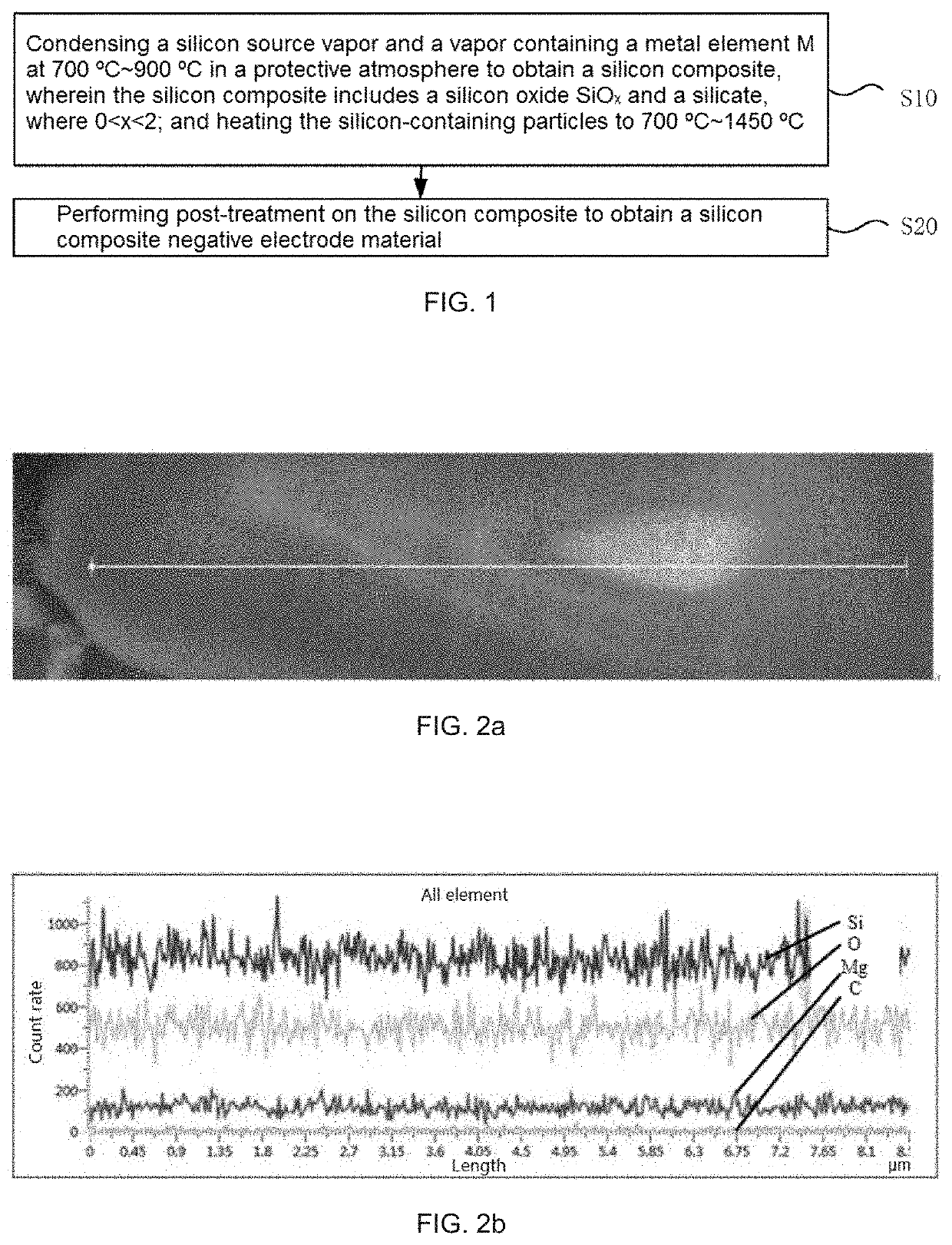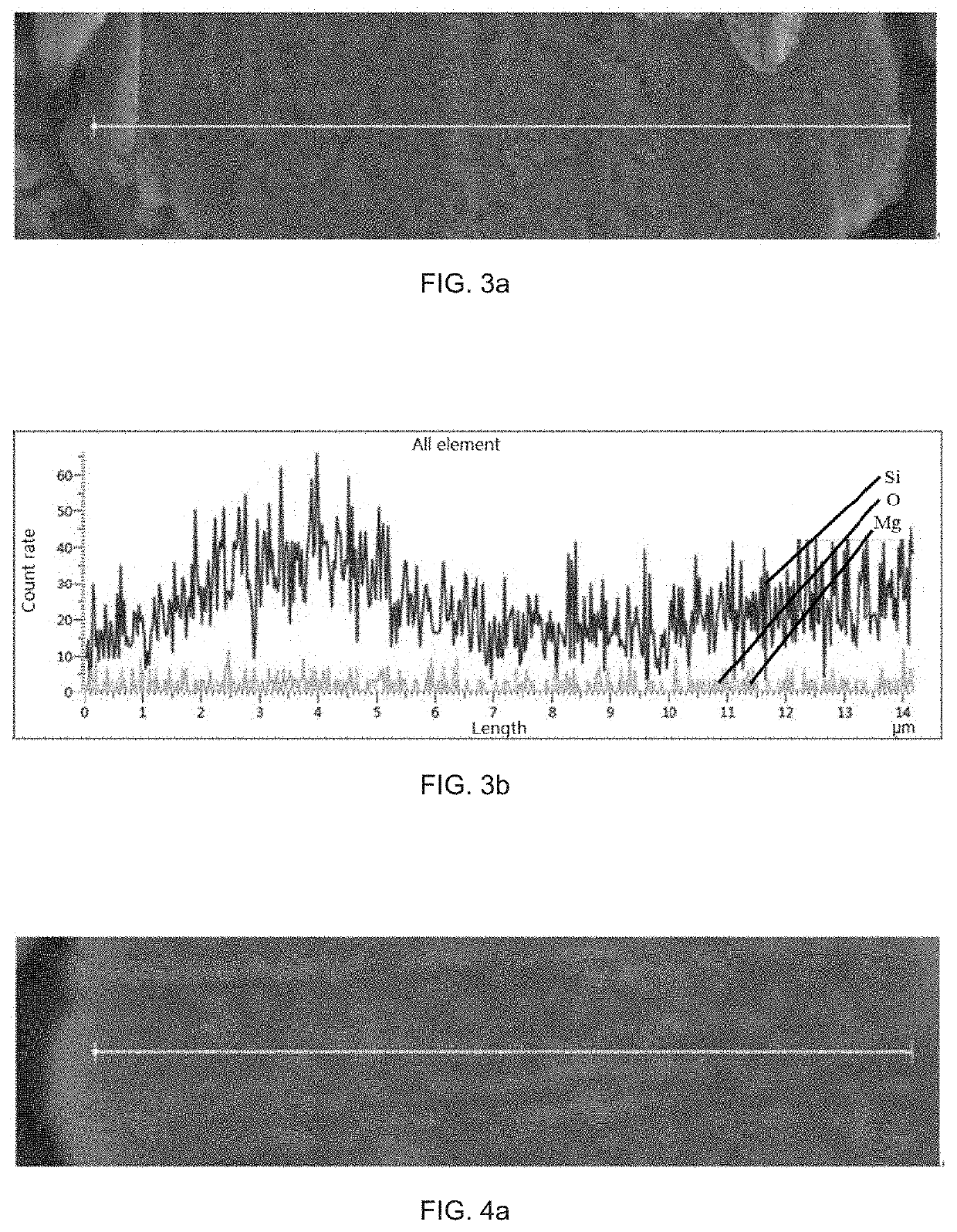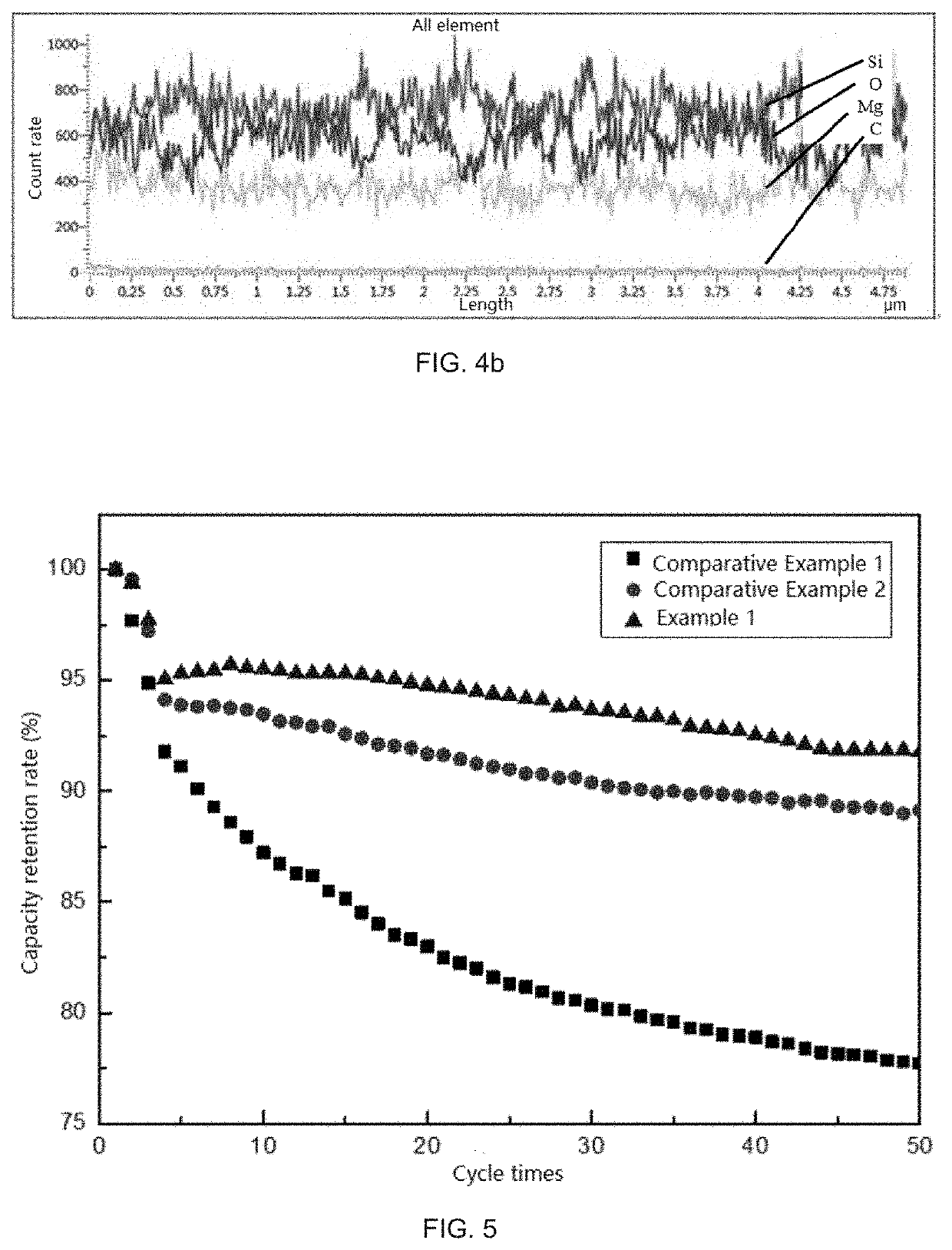Silicon composite negative electrode material and preparation method therefor, and lithium ion battery
- Summary
- Abstract
- Description
- Claims
- Application Information
AI Technical Summary
Benefits of technology
Problems solved by technology
Method used
Image
Examples
example 1
[0123]A silicon composite negative electrode material was prepared according to the following method in the present disclosure:
[0124](1) mixing 5 kg of a silicon powder (D50 was 10 μm) and 10 kg of a silicon micro powder (D50 was 5 μm) with a VC mixer for 30 min to obtain an SiO raw material, and placing the same at an end of a reaction chamber of a vacuum furnace close to a furnace tail;
[0125](2) placing 2 kg of a magnesium powder at an end of the reaction chamber of the vacuum furnace close to a furnace opening;
[0126](3) arranging a collector in a condensation chamber, and heating to 1300° C. under a vacuum condition of 200 Pa to generate an SiO vapor and an Mg vapor in the furnace;
[0127](4) controlling the temperature of the condensation chamber to be 800° C., cooling a uniformly mixed gaseous mixture in the condensation chamber for 12 h to obtain a silicon composite, and after the reaction was finished, cooling the equipment and collecting a product 11 kg;
[0128](5) making 5 kg o...
example 2
[0135]The present example is merely different from Example 1 in that in step (4), the temperature of the condensation chamber is controlled to be 700° C. The other operations for preparing the silicon composite negative electrode material are the same as those in Example 1.
[0136]The silicon composite negative electrode material prepared in the present example includes silicon, silicon oxide, and magnesium silicate, the chemical formula of the silicon oxide is SiOx (x=0.63), and the surface and voids of the silicon composite negative electrode material further contain carbon. The silicon composite negative electrode material has an average particle size of 5.5 μm, and a specific surface area of 3.5 m2 / g. In the silicon composite negative electrode material, a mass fraction of oxygen element is 26%, a mass fraction of magnesium element is 8%, and a mass fraction of carbon element is 5%.
[0137]The silicon composite negative electrode material prepared in the present example was subjecte...
example 3
[0138]The present example is merely different from Example 1 in that in step (4), the temperature of the condensation chamber is controlled to be 850° C. The other operations for preparing the silicon composite negative electrode material are the same as those in Example 1.
[0139]The silicon composite negative electrode material prepared in the present example includes silicon, silicon oxide, and magnesium silicate, the chemical formula of the silicon oxide is SiOx (x=0.63), and the surface and voids of the silicon composite negative electrode material further contain carbon. The silicon composite negative electrode material has an average particle size of 5.5 μm, and a specific surface area of 3 m2 / g. In the silicon composite negative electrode material, a mass fraction of oxygen element is 26%, a mass fraction of magnesium element is 8%, and a mass fraction of carbon element is 5%.
[0140]The silicon composite negative electrode material prepared in the present example was subjected ...
PUM
 Login to View More
Login to View More Abstract
Description
Claims
Application Information
 Login to View More
Login to View More - R&D
- Intellectual Property
- Life Sciences
- Materials
- Tech Scout
- Unparalleled Data Quality
- Higher Quality Content
- 60% Fewer Hallucinations
Browse by: Latest US Patents, China's latest patents, Technical Efficacy Thesaurus, Application Domain, Technology Topic, Popular Technical Reports.
© 2025 PatSnap. All rights reserved.Legal|Privacy policy|Modern Slavery Act Transparency Statement|Sitemap|About US| Contact US: help@patsnap.com



